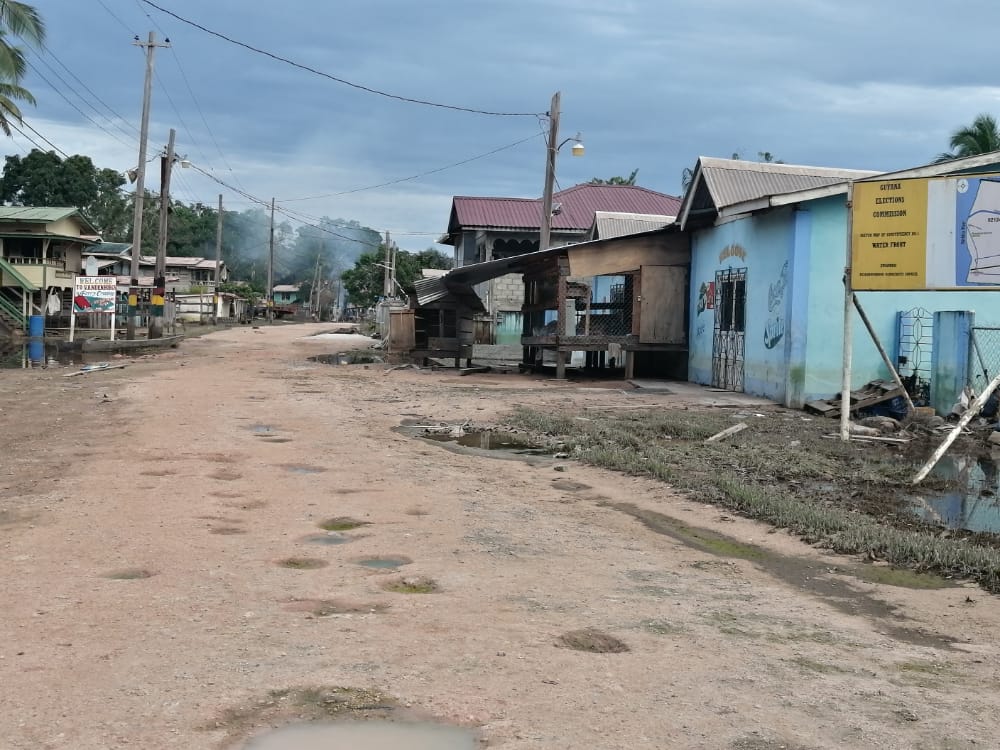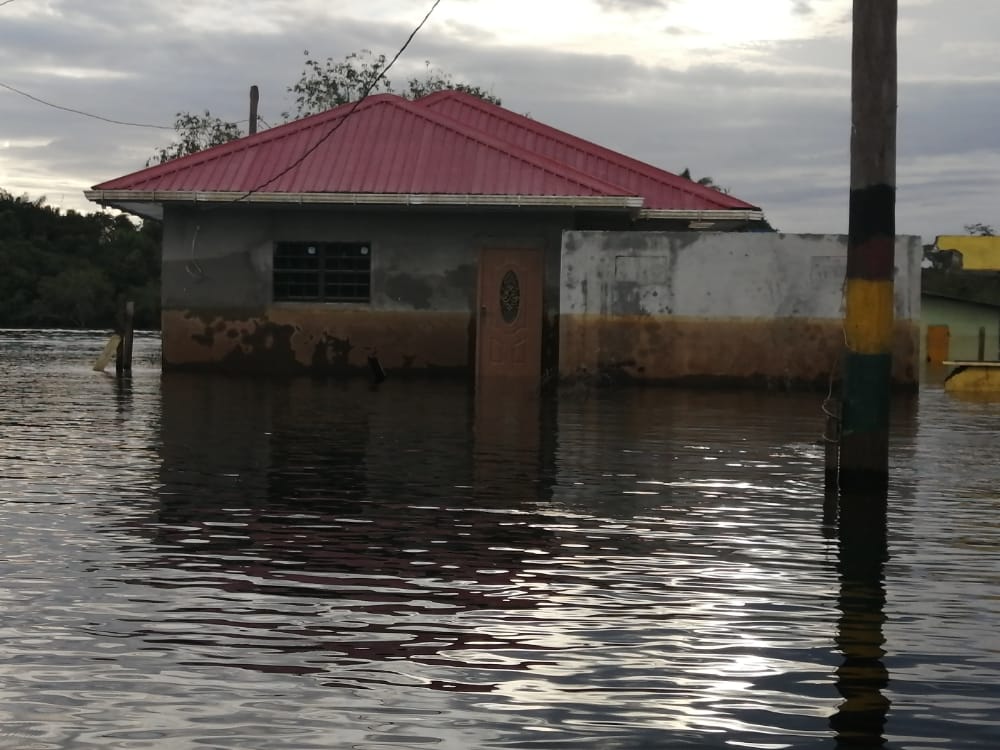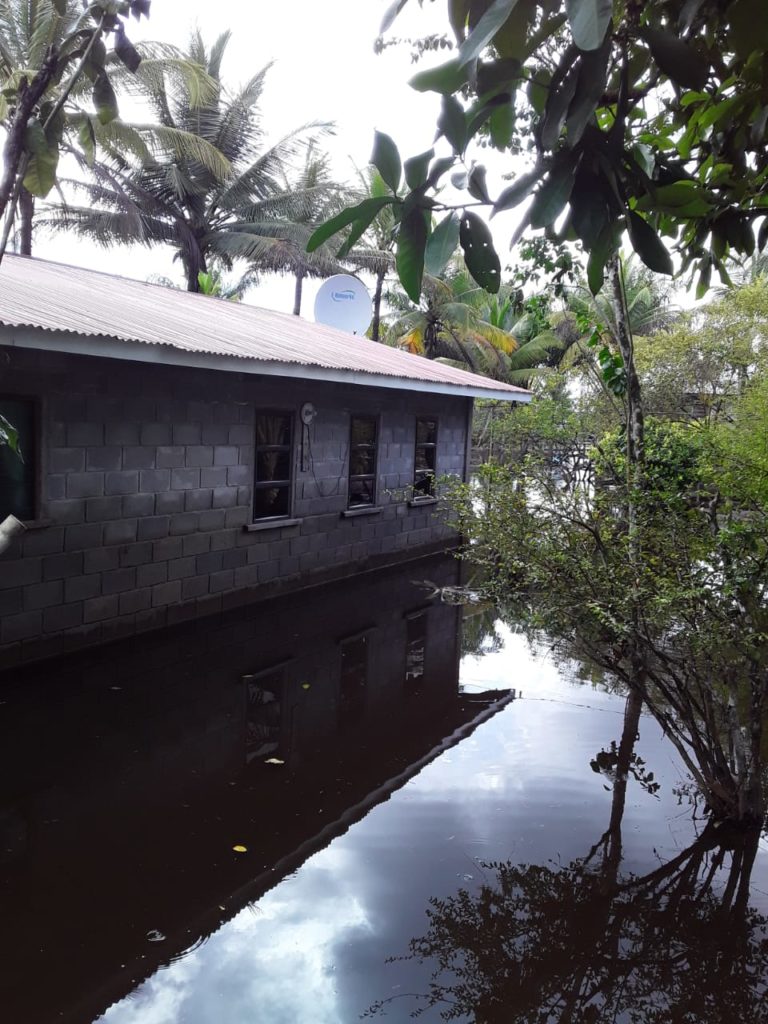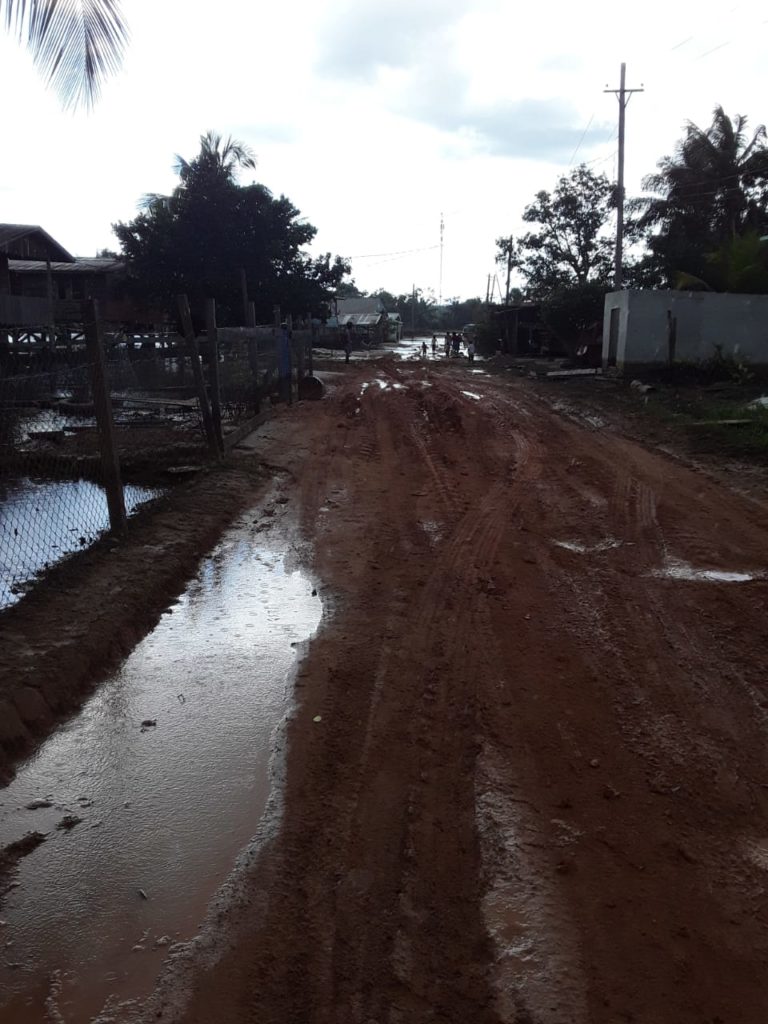-Scores of residents remain in shelters

By Solomon McGarrell
Floodwaters in all affected communities across Region 10, have receded significantly over the past several days as a result of the improved weather conditions.
Regional Chairman, Deron Adams, in a telephone interview told INFO 10 that while the water level have begun to recede rapidly in the communities of Kwakwani, Maria Elizabeth, Three Friends Mines, Coomacka Mines, Ladern’s Ville, Rockstone, Sandhills, RiversView, Malali, Dalawala and DeVeldt, it has remained stagnant in Great Falls and is slowly receding in the communities of Hururu, Muritaro, Old Kara Kara and Speightland.
As a result of intense heavy rainfall and the overlapping of the river, affected residents’ livelihoods were exacerbated; resulting in scores of families occupying shelters established by CDC and regional officials across the region. Residents housed at the various shelters across the region stand at a total of 215 as of June 30.
Here is a detailed report of the situation in several communities.
Kwakwani
Kwakwani, which has been inundated for approximately three months, has seen a significant drop in the water levels to some two to four feet in some sections of the community, as it remains relatively high in the Lamp Island area. The community has been deemed the hardest hit community in the region. Floodwaters were high as nine to 13 feet in some areas, which was described by residents as the worst flood to hit the community in decades.
According to Kwakwani’s Neighbourhood Democratic Council Vice Chairman, Cort Simeon, also a resident of the inundated Waterfront area, the water level is a little above the height it would usually come. While there are no reports of water-borne diseases, Simeon said they are experiencing an infestation of Mosquitoes in the area.
Simeon also related to INFO10, that the KNDC would be providing transportation for residents in shelters and other evacuees who relocated to families on higher grounds, to shuttle them back home as soon as the water recedes from the roadways. They are also collaborating with private stakeholders in the cleaning of residents’ homes.
There are 32 residents at the shelter at the Kwakwani Primary School and seven at Kwakwani’s Children Hostel as of June 30.

Three Friends Mines and Maria Elizabeth
According to the Regional Chairman, Deron Adams, the swift intervention of the National Drainage and Irrigation Authority (NDIA), resulted in a significant amount of the floodwaters to recede. However, floodwaters still exist in the yards of many residents.
As a result of the collapse of a reservoir in the East Montgomery area, coupled with heavy rainfall, the communities experienced a flash flood, hence destroying the main access road linking the two communities. Public spirited residents came together to build a bridge for the safe navigation of residents. Adams applauded residents for their selfless efforts.
There is one individual of Three Friend Mines, who is being sheltered at the Women’s Group Building.
Coomacka Mines
Floodwaters in this community have receded some 26 inches, leaving an estimated level of 14 inches. In an interview with Regional Councillor, Dexter Harding, who is also a resident of Coomacka Mines for 32 years, said this is the worst flood he has seen in his life. He said that there is a pattern of flooding every seven years.
Harding is of the opinion that the dredging of the Demerara River will aid in decreasing the levels of floodwaters in the future. He is also pleading with relevant authorities to dispatch sanitation hampers as the waters are receding rapidly.
Six persons are being sheltered at the Community Centre.
Muritaro and Malali
Residents have reported a slight withdrawal of three inches in Muritaro, while Malali has seen a drop of three inches in the water levels.
Regional Executive Officer (REO), Dwight John, told this media house that the Region’s Disaster Preparedness and Relief Committee, is closely monitoring the situation and has joined forces with the Civil Defence Commission to provide additional food and sanitation hampers to the respective communities when the water recedes.
Hururu
Waters are receding slowly. A large amount of affected residents remain at shelters; Forestry Compound has 57, while the primary and secondary school has 39.
Ladern’s Ville
Floodwaters have made a drop of three feet, residents in the backlands are now navigating floodwaters in their yards at some 26 inches.
37 residents are being sheltered at the Maple Town Primary School.

Rockstone
Waters have receded in the community. Nine persons are occupying the shelter at Rockstone Guest House and three at the Rockstone Primary School.
Develdt & Sandhills
Waters have receded, however, according to the Regional Chairman in a telephone interview, massive erosion is taking place in the respective communities as a result of the lengthy high tides. “I believe the erosion occurring at both Sandhills and Develdt is both a combination of rainfall and the high tide that occurred for the past month or so in the Sub-region,” Adams said.
Adams also noted that these erosions are taking place mainly at the boat landings of Health Centres of both communities and is calling on central gov’t for emergency works to be conducted in the respective communities assiduously.

A team from the Caribbean Disaster Emergency Management Agency (CDEMA) conducted a detailed assessment of the Region’s flood situation last week.
According to their preliminary report submitted to the gov’t on Wednesday, June 30, the region is in urgent need of support to rebuild residents’ lives as they were severely affected by the flooding.
The Civil Defense Commission (CDC) in a recent release listed Region 10 amongst four other regions to be the hardest hit by this year’s flooding which has been classified as a level three natural disaster.











More Stories
Flood waters recede in Linden following multi-agency intervention
All set for Independence celebration in Linden
Lindeners benefit from CHPA cement and steel initiative